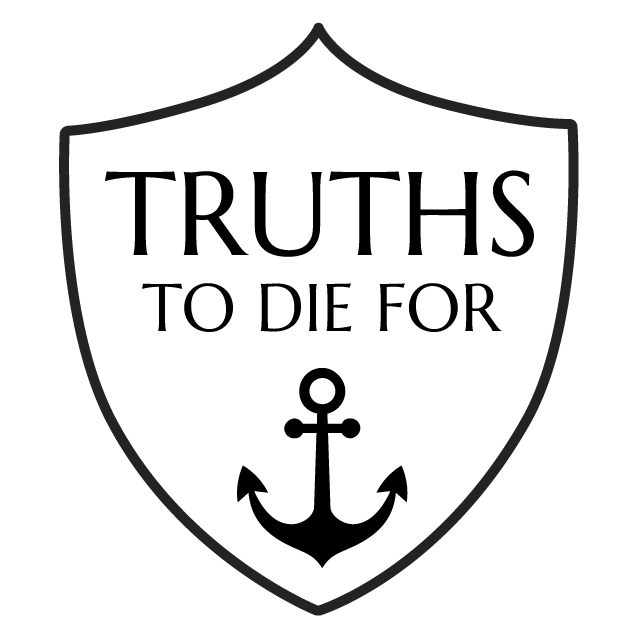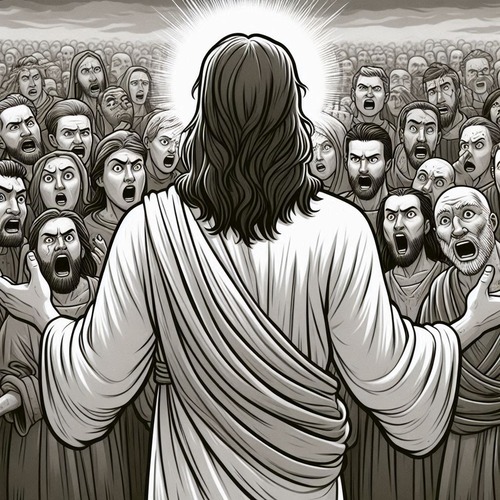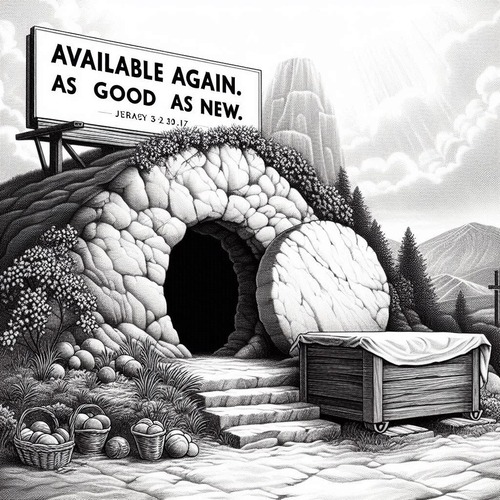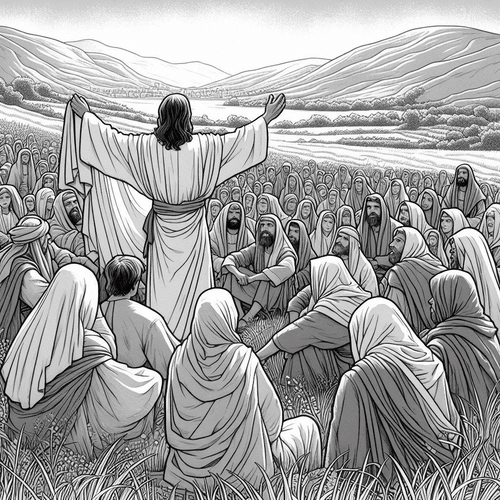The Scarlet Cord: How Old Testament Sacrifices Point to Christ
It’s a comment we hear now and then: “The Bible is filled with blood, altars, and animal sacrifices.” To modern readers, the Old Testament’s sacrificial system may seem primitive—even disturbing. Some critics argue Christ’s death on the cross contradicts this earlier system, as if God had changed His mind about how to deal with sin. But what if the opposite is true? What if every lamb slain in ancient Israel was pointing forward to a greater sacrifice yet to come?
THE CRIMSON CORD OF REDEMPTION
The “scarlet thread” begins with a remarkable story in the book of Joshua. When Israelite spies entered Jericho to scout the land, a woman named Rahab hid them from the king’s soldiers. In exchange for her protection, the spies promised to spare her and her family when Israel attacked—but only if she hung a scarlet cord from her window (Joshua 2:18-21). When Jericho’s walls fell and judgement struck, that crimson rope marked the house where life would be preserved.
This scarlet cord becomes a powerful image: red like blood, marking protection from death, identifying those covered by promise. It’s the same pattern we see woven throughout Scripture—a “scarlet thread” of redemption stained red with sacrificial blood, running from Genesis to Revelation. Just as Rahab’s family was saved by trusting the promise symbolised in that red cord, all of humanity can be saved by trusting in the blood of Christ. The cord connects every sacrifice, every altar, every drop of blood shed in the Old Testament, pointing forward to the ultimate sacrifice on the cross.
The cord first appears immediately after humanity’s fall into sin. When Adam and Eve disobeyed God, they tried covering their shame with fig leaves. But God clothed them with animal skins (Genesis 3:21)—the first death for sin, the first covering that cost life. The scarlet thread had begun.
THE PATTERN WOVEN THROUGHOUT SCRIPTURE
God’s Provision for Abraham’s Family (Genesis 22:8): When Abraham raised the knife over his son Isaac, God intervened and provided a ram instead. Abraham’s prophetic words echo through history: “God will provide the lamb” (Genesis 22:8).
Centuries later, God provided His own Son—the ultimate Lamb—also crowned with thorns.
The Passover Lamb’s Blood (Exodus 12): Centuries later, as Israelites painted lamb’s blood on their doorposts during the first Passover, death passed over those sheltered by that blood (Exodus 12). The apostle Paul would later write, “Christ, our Passover lamb, has been sacrificed” (1 Corinthians 5:7).
The same scarlet cord: blood marks protection, life comes through death
The Day of Atonement (Leviticus 16): Israel’s most sacred ritual for dealing with sin was one that was repeated annually—on the Day of Atonement. The high priest entered the Holy of Holies once a year with sacrificial blood. One goat was sacrificed; another (the “scapegoat”) symbolically carried sins into the wilderness.
This ritual had to be repeated every single year—the scarlet thread pointing forward to something permanent.
The Suffering Servant Prophecy (Isaiah 53): Written 700 years before Christ, Isaiah described a coming figure who would suffer for others’ sins. “He was pierced for our transgressions, he was crushed for our iniquities” (Isaiah 53:5). “The LORD has laid on him the iniquity of us all” (Isaiah 53:6).
The scarlet thread became explicit prophecy: one righteous person would die in place of the guilty.
The entire Old Testament sacrificial system—detailed extensively in Leviticus—wasn’t primitive superstition. It was divine instruction, a visual sermon preached in blood and smoke. But here’s the crucial point: these sacrifices were never meant to stand alone.
The book of Hebrews tells us plainly “the law is only a shadow of the good things that are coming—not the realities themselves” (Hebrews 10:1). Shadows point to something substantial. The shadow of a tree tells you a real tree exists.
WHAT ANIMAL BLOOD COULD NEVER DO
This raises an important question: if Old Testament sacrifices were just shadows, what could they not accomplish that Christ’s death could?
The answer is everything that matters eternally. “It is impossible for the blood of bulls and goats to take away sins,” Hebrews 10:4 declares. Animal sacrifices had to be repeated constantly—daily offerings, yearly rituals, an endless cycle of bloodshed. They could ceremonially cleanse, they could restore community standing, but they couldn’t transform the human heart or permanently remove guilt before God.
Even the Day of Atonement—Israel’s most sacred ritual—required repetition every single year. The high priest would enter the Holy of Holies with blood to make atonement (a word meaning “covering” or “reconciliation” for sin), but he’d have to return the next year. The debt was never fully paid, only temporarily covered.
Christ’s sacrifice changed everything. When Jesus cried “It is finished” from the cross (John 19:30), He wasn’t expressing defeat—He was declaring victory. His death was the once-for-all sacrifice that animal blood could never accomplish (Hebrews 9:12). His blood didn’t just cover sin; it removed it. “As far as the east is from the west, so far has he removed our transgressions from us” (Psalm 103:12). The new covenant promised through Jeremiah became reality: “I will forgive their wickedness and will remember their sins no more” (Jeremiah 31:34).
ONE PLAN, TWO TESTAMENTS
But this creates another question: what about believers who lived before Christ? Were they lost because they lived on the wrong side of history?
The Eternal Plan of Salvation: God always had one plan of salvation, not two systems for different eras. Revelation describes Jesus as “the Lamb slain from the foundation of the world” (Revelation 13:8). Christ’s death wasn’t Plan B devised after human rebellion—it was determined before creation itself.
The scarlet thread wasn’t a temporary measure; it was always pointing to the eternal solution
How Old Testament Believers Were Saved: Old Testament saints—Abraham, Moses, David, Ruth—were saved by faith in God’s promise. They looked forward to the coming Redeemer, just as we, today, look back to the cross. Paul makes this clear: Abraham “believed God, and it was credited to him as righteousness” (Romans 4:3).
The object of their faith was the same Saviour, revealed progressively through types and shadows
Christ’s Blood Reaches Backward and Forward: Every Old Testament sacrifice was a promissory note, guaranteed by the cross. When Christ died, that promise was fulfilled—the note was cashed at Calvary. His blood is sufficient for all who trust in God’s provision, regardless of when they lived. The scarlet thread connects all believers across all time to one sacrifice. And to one Saviour.
SEEING THE WHOLE STORY
After His resurrection, Jesus explained to His bewildered disciples “what was said in all the Scriptures concerning himself” (Luke 24:27). When John the Baptist saw Jesus approaching, he proclaimed, “Look, the Lamb of God, who takes away the sin of the world!” (John 1:29). John recognised in the Spirit what the scarlet thread had been revealing all along—from Rahab’s crimson cord to the Passover blood to the suffering Servant prophecy.
The Old Testament sacrifices don’t contradict Christ’s death—they demand it, anticipate it, and help us understand it. Every altar testified that sin requires death. Every priest proclaimed we need a mediator. Every lamb whispered, “Something greater is coming.”
Christ is that greater sacrifice—perfect, final, sufficient. The scarlet thread reaches its fulfillment at the cross, where God’s justice and mercy embrace, where the Lamb provided by God dies in our place so we might live in His.
HOW OLD TESTAMENT SACRIFICES POINT TO CHRIST: RELATED FAQs
Why did God design such a bloody sacrificial system? Couldn’t He have chosen a different way? The bloody nature of sacrifice teaches us the true cost of sin—it requires death. Reformed theologian JI Packer explained God designed the sacrificial system to make sin’s seriousness visible and tangible, not abstract. Blood represents life itself (Leviticus 17:11), so when blood is shed, we understand sin costs life. This wasn’t arbitrary cruelty; it was mercy—instructing us what our redemption would ultimately require from God Himself.
- Did the Old Testament priests understand they were pointing to Christ, or were they just following rituals? The level of understanding varied among priests and individuals, but Scripture suggests many grasped that sacrifices pointed beyond themselves. The psalmist wrote, “You do not delight in sacrifice…the sacrifices of God are a broken spirit” (Psalm 51:16-17), showing awareness that God wanted heart transformation, not merely ritual. Reformed scholar Geerhardus Vos noted faithful Israelites had a “forward-looking faith”—they knew their sacrifices were insufficient and trusted God’s promised future solution. They may not have known all the details about Jesus, but they knew God would provide a final answer to sin.
- What’s the Reformed view on whether animal sacrifices actually did anything, or were they just object lessons? Reformed theology affirms Old Testament sacrifices had real, though limited, efficacy within the old covenant framework. They genuinely addressed ceremonial uncleanness and maintained Israel’s covenant relationship with God, but they couldn’t regenerate hearts or permanently remove sin’s guilt. John Calvin wrote these sacrifices were “true” but not “complete”—they truly conveyed God’s grace through faith, but only because they pointed to Christ’s future work. They weren’t empty symbols; they were effective signs and seals of the same gospel promise we trust today.
How does the Reformed understanding of “covenant theology” help explain the connection between testaments? Covenant theology sees one overarching “covenant of grace” running through both testaments, with different administrations but the same saving content. Reformed theologians distinguish between the form (how God revealed and administered salvation) and the substance (Christ and salvation by grace through faith), which remains constant. This means the Mosaic covenant with its sacrifices wasn’t a different way of salvation—it was the same gospel packaged in types and shadows appropriate for that stage of redemptive history. Westminster Confession of Faith states Old Testament believers were saved “by Christ, the promised Seed,” even though He hadn’t yet come.
- Why do some Old Testament passages seem to reject sacrifices (like Hosea 6:6, “I desire mercy, not sacrifice”)? These passages aren’t rejecting the sacrificial system itself but condemning empty ritualism divorced from heart faith and obedience. God never intended sacrifices to function as mechanical transactions where people could sin freely as long as they brought animals to the altar. The prophets echoed what the sacrificial system itself taught: true atonement requires a changed heart, not just external compliance. Reformed interpretation sees these prophetic critiques as pointing forward to Christ, who would accomplish both the external sacrifice and the internal heart transformation that animal blood could never achieve.
- What happened to believers who died between Old Testament times and Christ’s actual death on the cross? Reformed theology holds that Christ’s sacrifice is eternal in its efficacy, reaching backward and forward in time to cover all who trust in God’s promise. When Old Testament believers died, they entered God’s presence based on the future certainty of Christ’s work—much like we might accept a check before it’s cashed, knowing the funds are guaranteed. Peter refers to Christ preaching to “spirits in prison” (1 Peter 3:19), which some Reformed scholars interpret as Christ’s victory announcement to Old Testament saints after His death. Their salvation was always grounded in Christ’s blood, applied retroactively by divine foreknowledge.
How does typology work? How do we know which Old Testament elements point to Christ and which don’t? Typology recognises patterns in Old Testament history, persons, and institutions that God intentionally designed to prefigure Christ and redemption. Reformed hermeneutics insists valid types must be confirmed by the New Testament itself—we don’t invent types based on imagination or allegory. The New Testament explicitly identifies key types: Adam as a type of Christ (Romans 5:14), the Passover lamb (1 Corinthians 5:7), the bronze serpent (John 3:14), Melchizedek’s priesthood (Hebrews 7), and many others. Reformed scholar Patrick Fairbairn taught types have both historical reality and prophetic significance—they truly happened while also pointing beyond themselves to greater fulfillment in Christ.
HOW OLD TESTAMENT SACRIFICES POINT TO CHRIST: OUR RELATED POSTS
Editor's Pick
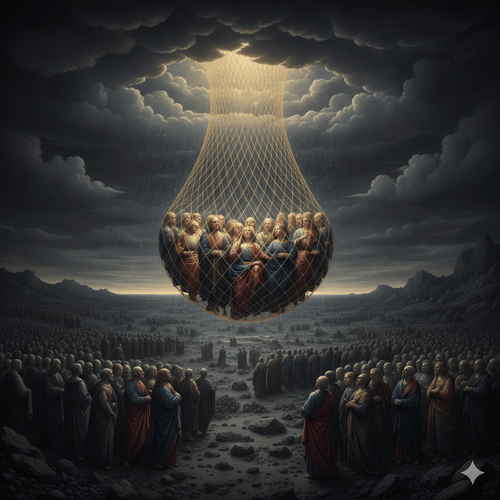
Why Do People Hate the Doctrine of Election?
…WHEN THEY REALLY SHOULDN’T Few Bible doctrines provoke stronger reactions than election. The idea that God chose some for salvation [...]
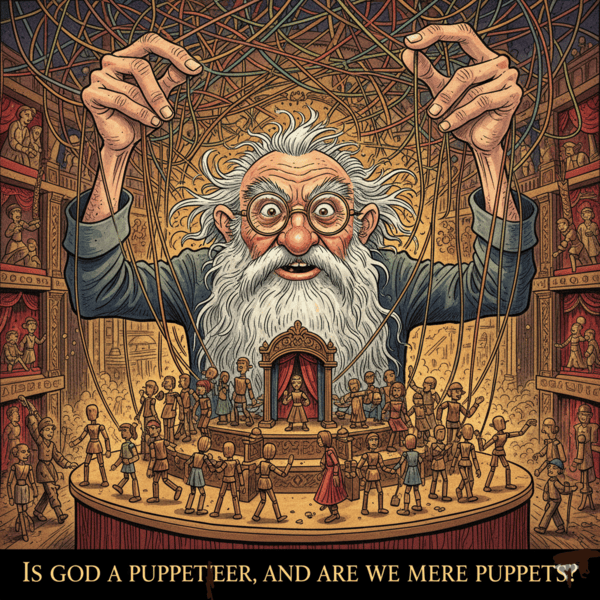
The Doctrine of Providence: Does God Really Govern All Things?
You’re sitting in the doctor’s office when the diagnosis lands like a thunderclap. Your mind races: Why this? Why now? [...]
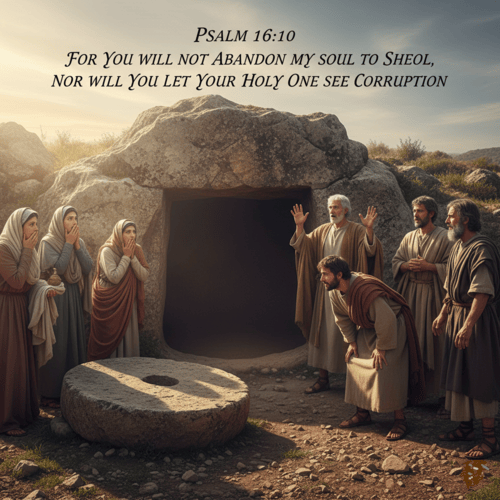
No Decay, No Defeat: What It Means That Christ’s Body Saw No Corruption
On the Day of Pentecost, Peter stood before thousands and made a startling claim: David's body decayed in the tomb, [...]
SUPPORT US:
Feel the Holy Spirit's gentle nudge to partner with us?
Donate Online:
Account Name: TRUTHS TO DIE FOR FOUNDATION
Account Number: 10243565459
Bank IFSC: IDFB0043391
Bank Name: IDFC FIRST BANK

